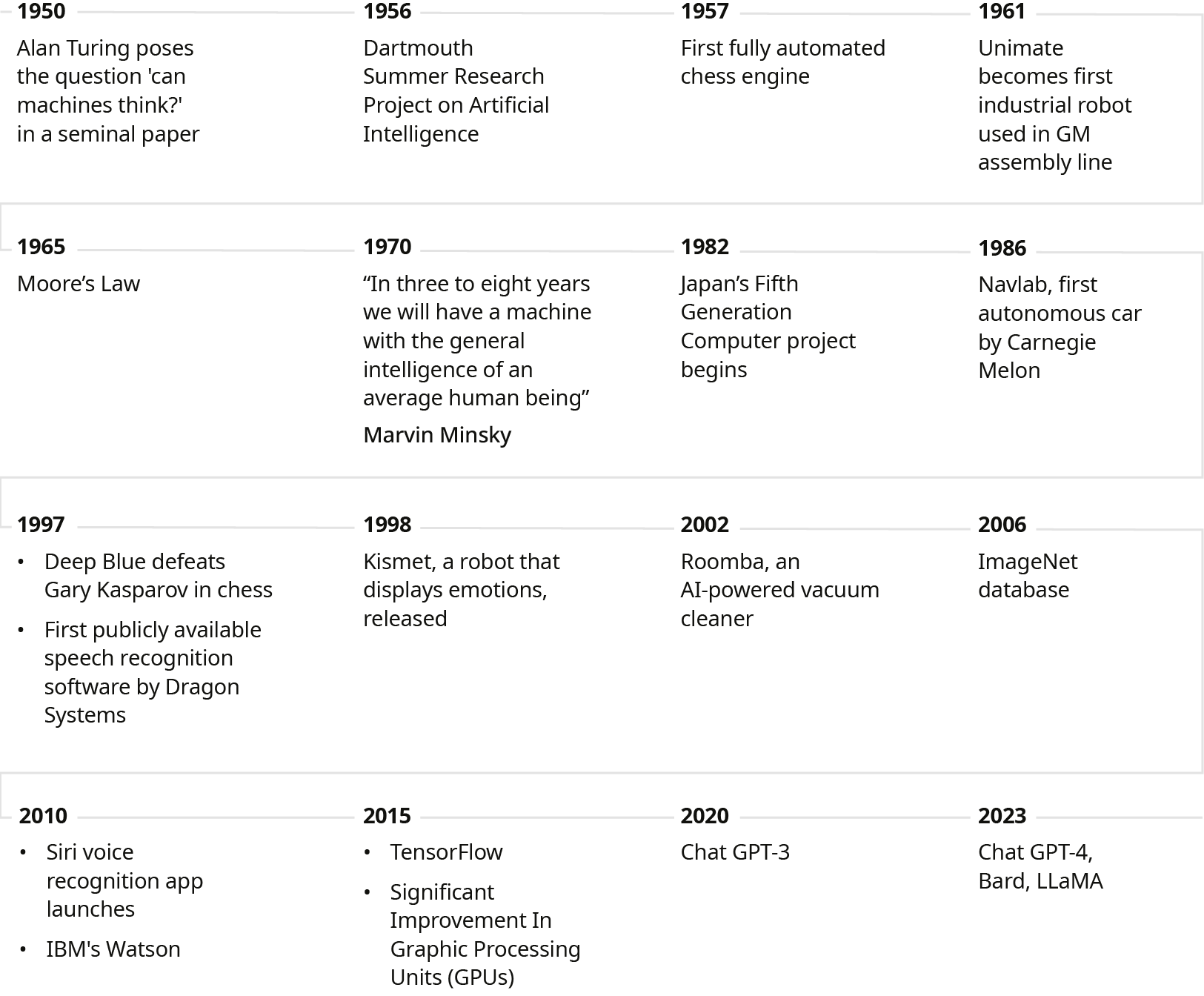Artificial intelligence (AI) is set to transform our world, and the ongoing discourse now centers on the strategic imperative of optimizing its potential, and how to do that. It is important that institutions pivotal to a nation, such as centers of government, maintain a cutting-edge position in comprehending and effectively deploying this technology, but also that they have a nuanced understanding of its associated risks.
The center of government refers to the institution or group of institutions that offer direct support to a country’s leadership and aid in the overall management of government. Today, the center of government plays a central role in advancing national agendas, and therefore it is crucial that they possess a comprehensive understanding of AI and utilize it judiciously.
Understanding the AI landscape
To grasp how the center of government can harness the potential of AI, it is first crucial to gain a comprehensive understanding of the AI technology landscape, as well as its capabilities and limitations. The concept of AI has existed for a considerable period, but in recent times, the availability of tools, particularly in machine learning, has facilitated its scalability and exponential growth.

Evolving the center of government with AI
Over the course of the past century, the role of the center of government has undergone a significant transformation. Once primarily concerned with administrative affairs to support a country’s leaders, it is now a core vehicle through which leadership sets policy priorities, oversees the implementation of public policies, and proactively advances national agendas.
In recent years, governments worldwide have witnessed cross-cutting and multidimensional problems such as fiscal discipline, debt sustainability, socio-economic crises, national and global political tensions, security threats, and pandemics. This has, in turn, increased the need for a strong organizational apparatus to support centralized steering and collaborative, coherent governance efforts, which has reconfirmed the importance of centers of government.
AI CAN BOLSTER THE CENTER OF GOVERNMENT’S ADMINISTRATIVE FUNCTIONS
In the near future, the most prevalent use case for AI tools for both the government and private sector will be to enhance productivity. AI can facilitate this by optimizing processes, managing knowledge effectively, and generating content efficiently.
Process enhancement: AI speeds up tasks such as email drafting and meeting transcriptions, but human oversight is crucial to validate content and maintain quality control.
Knowledge management: Large-language models extract insights from unstructured data, while intelligent archiving systems categorize and improve access to government-related content.
Content creation: AI tools save time in creating reports and documents, but human review is essential for quality assurance and accuracy.
AI CAN BOLSTER THE CENTER OF GOVERNMENT’S STRATEGIC FUNCTIONS
There are many ways that this evolving technology can strengthen the center of government’s strategic abilities. Here are some tangible ways that AI can strengthen strategic decision-making across the center of government:
Oversight of public policies: AI-driven insights anticipate challenges and opportunities for proactive policy-making, while real-time monitoring tools aid adaptive decision-making by tracking policy performance.
Oversight of public finances: Algorithmic tools forecast government expenditures and revenues, analyzing fiscal sustainability, while AI supports various government functions.
Oversight of human capital: AI improves civil service workforce optimization by tracking performance, providing oversight, and identifying training needs.
Communication support: Advanced language-learning models enhance media monitoring and sentiment analysis, allowing tailored communication and efficient briefings for leadership and events.
It is clear that AI can have an impact on the efficiency of the center of government – whether operationally or strategically – but the key government stakeholders that make up this core group should also be aware of the overall impact of AI across a nation’s sectors and industries.
This is paramount because of the depth and breadth of AI’s potential impact on a country, its economy, and its citizens. Given the profoundly transformative potential of these technologies, the center of government should actively oversee policies across all sectors that are impacted by AI.
Unlocking the benefits and risks of AI in the center of government
AI has the potential to evolve the operations and strategic capabilities of the center of government. To fully capitalize on the benefits of AI while mitigating its potential pitfalls, the center of government must adopt a proactive, pragmatic, and well-planned approach, leading by example. However, as with any transformative technology, there are inherent risks that must be carefully considered. It is crucial that the center of government is fully aware of these risks to maximize the benefits as they develop their AI capabilities. Also, as a core enabler of national agendas, center of government stakeholders must also be aware of the broader impact that AI may have on industries and society in general.
Given the widespread accessibility and use of this technology, the center of government, as a critical core of any nation, should leverage AI to stay ahead of the curve, but should do so with prudence and caution.
